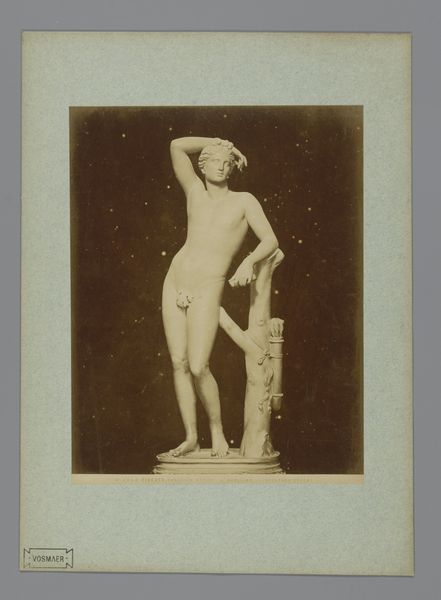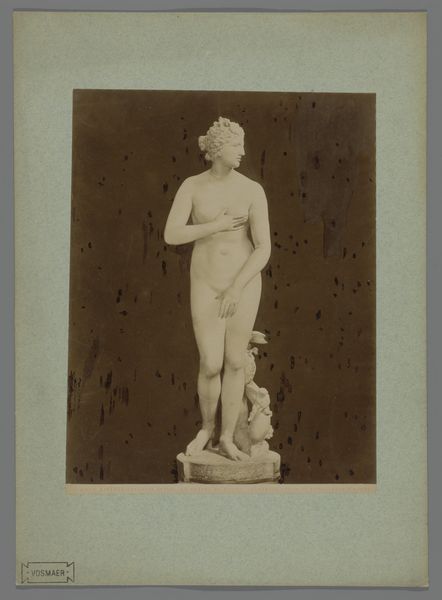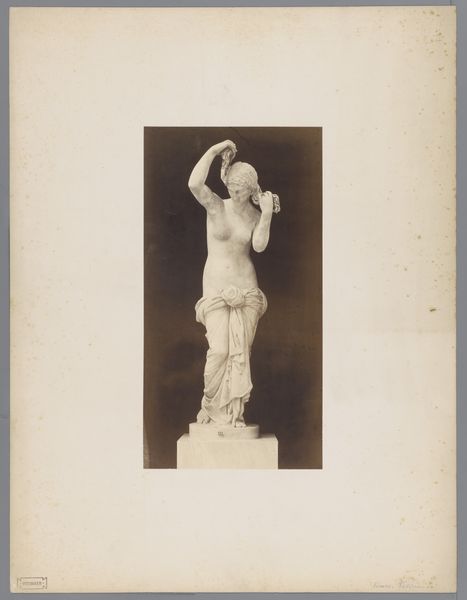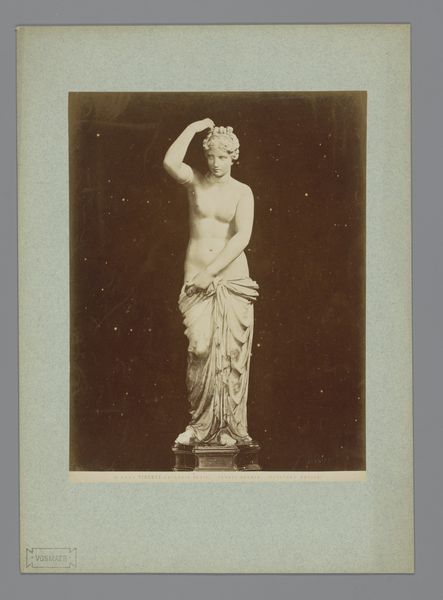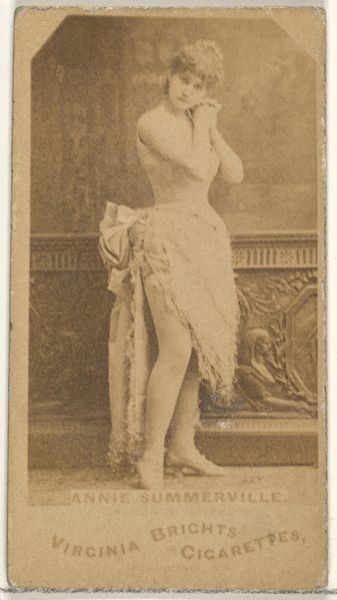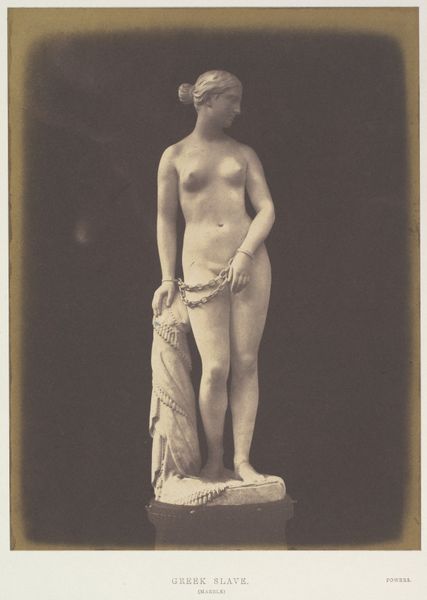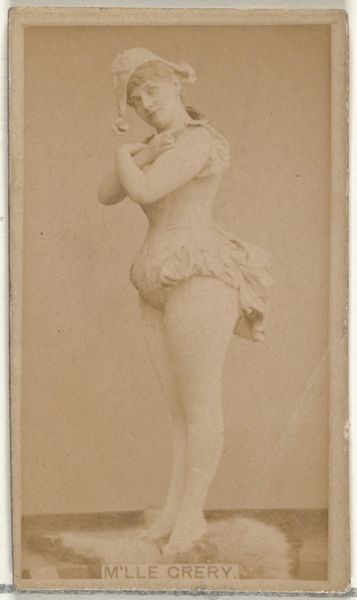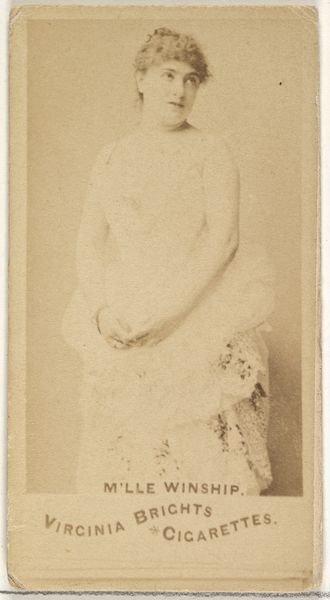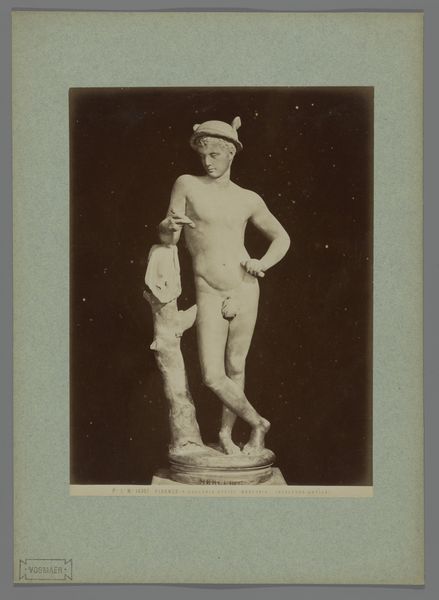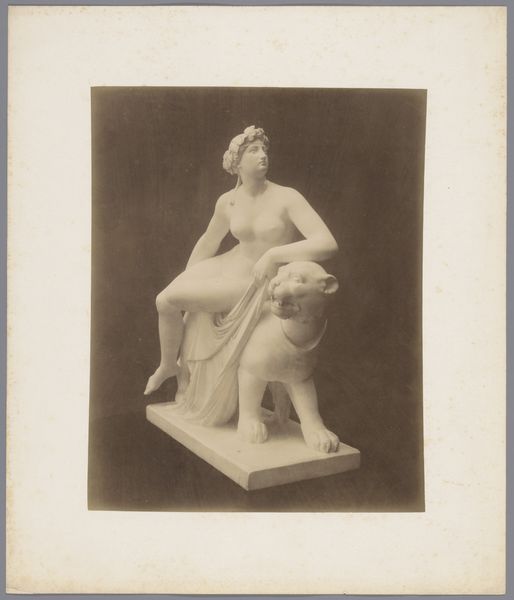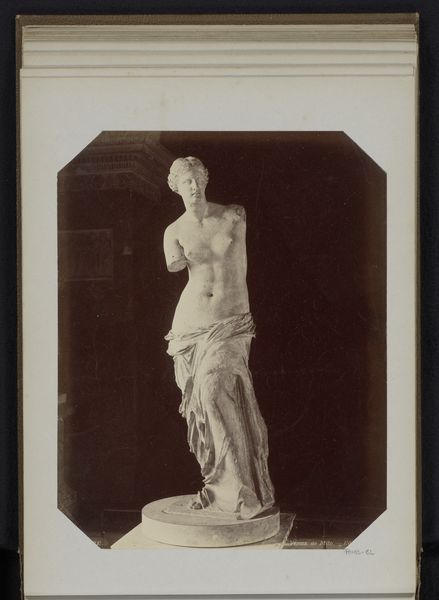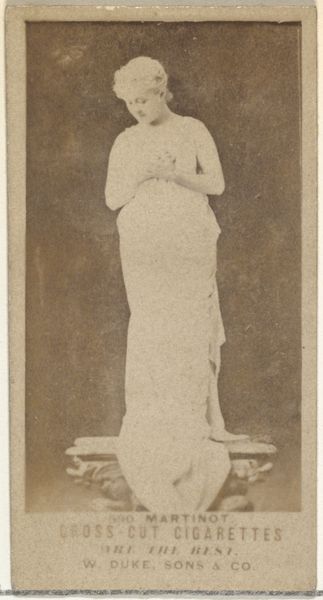
photography, sculpture, marble
#
portrait
#
neoclassicism
#
landscape
#
classical-realism
#
figuration
#
photography
#
sculpture
#
marble
#
statue
Dimensions: height 169 mm, width 109 mm
Copyright: Rijks Museum: Open Domain
Curator: At first glance, the light feels really strange, as if we're looking at a ghost of an image, quite unsettling! Editor: Indeed. What we're looking at is a photographic image entitled "Venus met de appel van Bertel Thorvaldsen," dating roughly from 1880 to 1905 and currently housed in the Rijksmuseum collection. It depicts a marble sculpture of Venus. Curator: Ah, that explains the ethereal quality. The choice of medium and period immediately raise questions for me. Photography was becoming more widespread, but why use it to capture a sculpture already so firmly entrenched in the neoclassical tradition? What does that gesture achieve in terms of accessibility? Editor: Well, the photograph allows for wider distribution and consumption of Thorvaldsen’s sculpture. It democratizes access, in a way. This image offered Victorians a tangible piece of high art, mediated through the emerging technology of photography. It brings questions of production to the fore - how are artistic reputations constructed and maintained through reproduction? Curator: So it becomes more about the commodity form of art? I imagine the economics of production are important: where the marble came from, the sculptors who might have replicated Thorvaldsen's original design, and, of course, the labor of the photographer creating multiple prints. Were these sold as individual art objects, or bound in albums? Editor: The image is fascinating precisely because of its contradictions. It seeks to monumentalize while simultaneously offering itself as a portable, reproducible item. What does it mean to possess a goddess, after all? The circulation of images like this shaped societal attitudes towards classical ideals of beauty. Curator: Absolutely, it reframes how society thought about beauty. Seeing the process by which the photographic reproduction occurred reveals the industrial undertones to the classical subject. Editor: It underscores the politics of representation and how those politics were, and still are, tied to socio-economic dynamics. Curator: Seeing how this photography translates the artistic production offers an important understanding on art accessibility and consumption! Editor: Definitely, thank you for your insights.
Comments
No comments
Be the first to comment and join the conversation on the ultimate creative platform.
